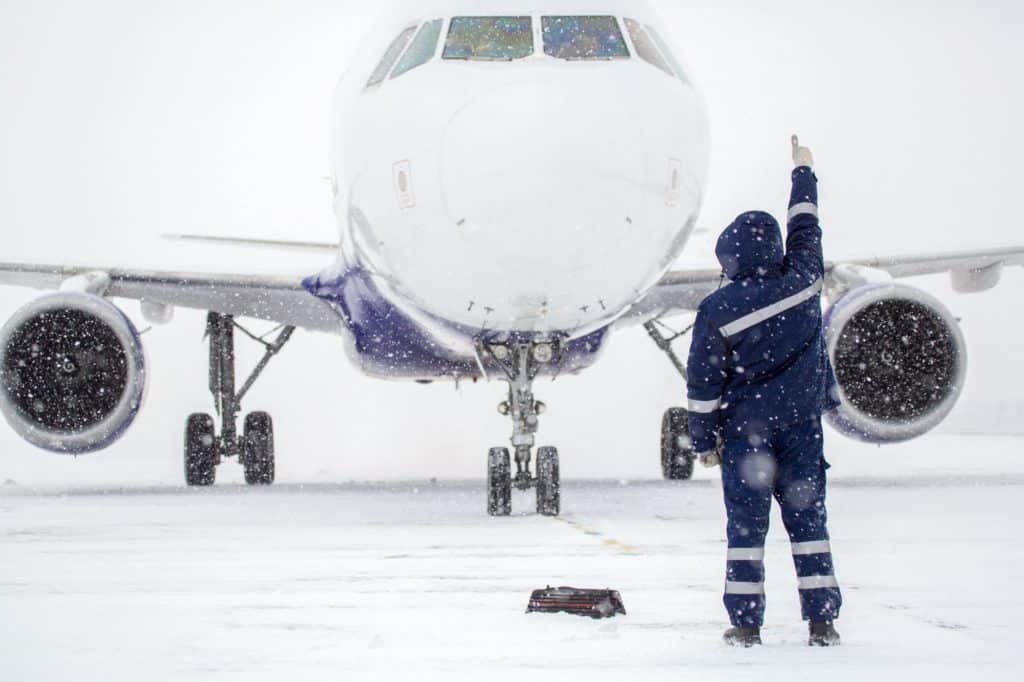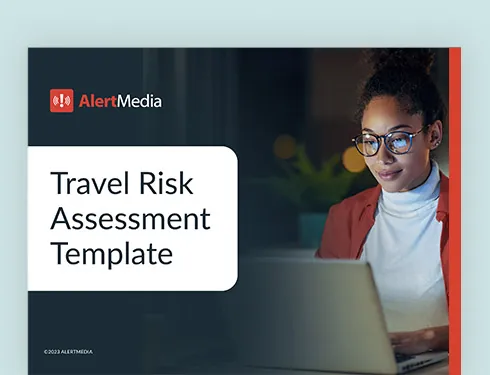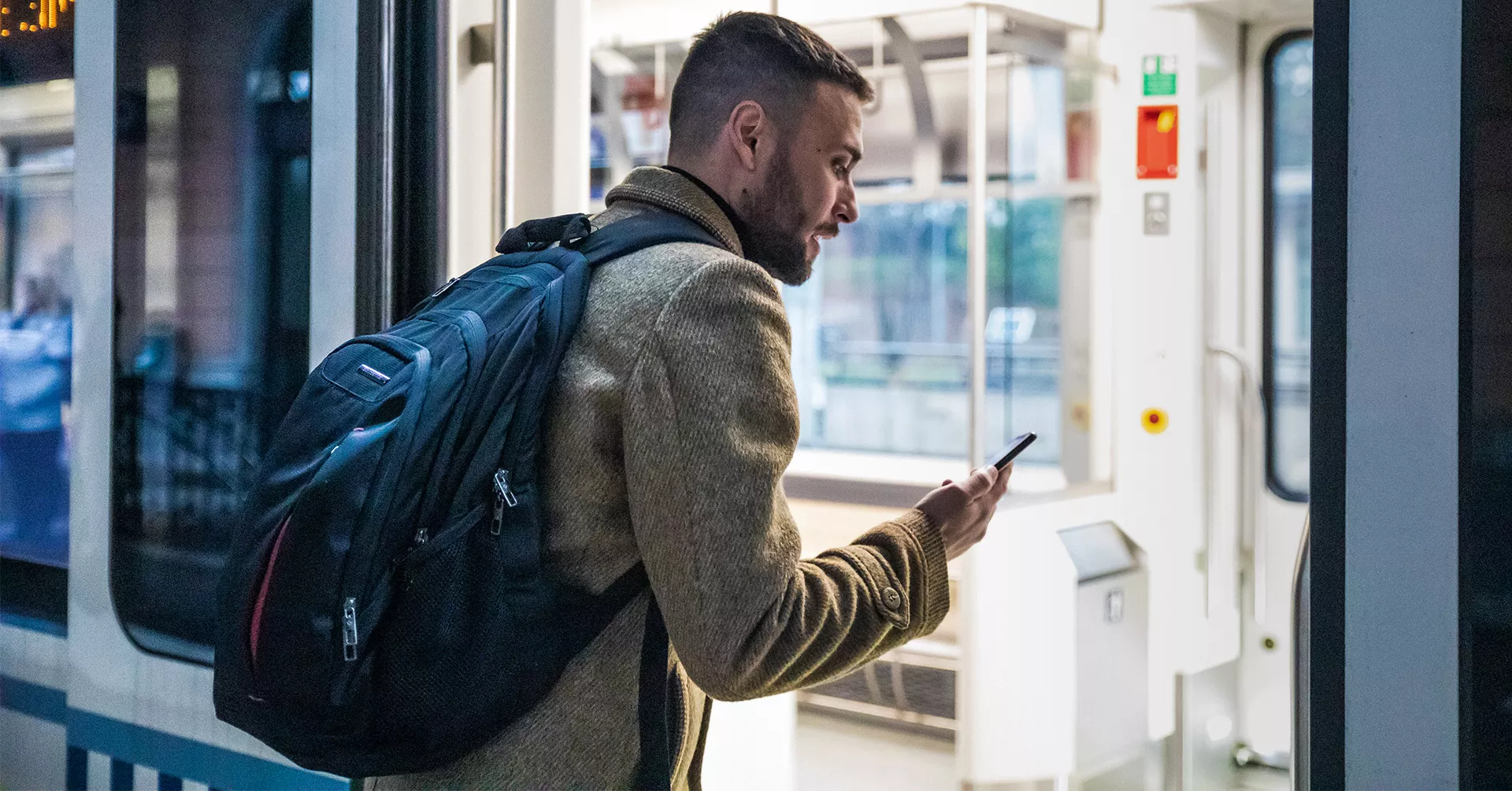
How to Manage Business Travel Risks in the Winter
Traveling for business in the winter can make a bad season for productivity even worse. In this post, we’ll discuss how to mitigate the risks of winter travel and how to keep employees safe, engaged, and productive throughout.

The Many Complexities of Winter Travel
The scene is all too familiar to most business travelers. You’re sitting at the airport gate, not sure whether it’s worth pulling out your laptop again. Your flight’s been delayed by an hour at this point. The last update from the gate agent said the flight would be leaving any minute now, but you doubt it. The plane hasn’t even arrived at the gate yet. You’re not sure whether to reschedule meetings the next day and book another night at a hotel, or if you should wait it out.
This is any business traveler’s worst nightmare. During the winter—when blizzards and high winds make travel even more unpredictable—this scenario is all too common.
This blog will examine business travel risks in the winter—plus what you can do about those threats. By taking a few specific steps, you can minimize the headache for your employees and maximize your business efficiency.
Download Our Travel Risk Assessment Template
How Winter Threats Impact Business Travel
We have already written about the hazards of winter weather. These challenges apply to any business. But what about for business travelers? The fact is, winter weather is even more impactful on business travelers than on stationary employees. Here are some of the unique threats winter weather poses to traveling employees:
Disrupted travel schedules
Flight delays, crowded planes, poorly lit airports. Time spent making the trip from one city to another is typically not the most enjoyable. (Why else would people be willing to pay such a premium for first class? As an example, in July 2018, an American Airlines flight from New York City to London cost $915. A first-class ticket on the same flight: $5,407.)
Experienced business travelers know how to mitigate these risks. Unfortunately, winter weather can throw a wrench in even the best-laid travel plans. These threats start early. On a single day in 2019—before winter had even officially begun—over 700 flights were canceled and 4,500 more were delayed due to winter storms.
Travel disruptions like this are frustrating for the employee and can be costly for your organization. Are your business travelers going to miss meetings because they can’t get back on time? Do they have a plan for working remotely?
Make sure that you stay up to date on any potential winter weather travel disruptions in the areas your employees are traveling to—and make sure you have a plan in place if such disruptions do emerge.
Decreased productivity
Traveling for business in the winter can make a bad season for productivity even worse. Winter on its own is bad enough. Each year, the loss of productivity during the winter is estimated to be upwards of $50 billion.
On its own, travel also usually means a loss of productivity. For the typical business traveler, the cost of travel-related mishaps will add up to 2.3 lost work days and $1,475 in missed productivity over the course of a year.
So, what about when these two things come together? If you aren’t prepared, it can be disastrous for employee productivity. You cannot control the weather, but you can make sure that you are informed about the upcoming forecast and have a plan for your business travelers.
Threats to physical well-being
Although travel disruptions and lost productivity are legitimate concerns, nothing is more important than keeping your business travelers safe. Winter weather brings unique threats—ones that your business travelers might not be used to dealing with. It’s your job to make sure that they are safe and informed while they are traveling on your organization’s behalf.
If they will be working outside at all, make sure they know how to stay safe working in cold weather. It is most likely, though, that the primary risks for your business travelers will involve getting from Point A to Point B.
While locals may know when to stay off the roads, your business travelers likely will not. They also may not have experience driving in icy conditions—especially in an unfamiliar city.
You need to be able to proactively communicate to your business travelers when they should stay off the road. Make sure you have a way to monitor emergency weather alerts and road conditions in the cities that your business travelers are working in on any given day.
One way to do this automatically is to implement a threat monitoring system, like AlertMedia’s. It pulls threat data from hundreds of trusted sources (like the National Weather Service) and analysts from around the world—then automatically warns you when one of your traveling employees could be at risk. This is crucial if you have business travelers in multiple cities at a given time, especially during the winter.
Duty of Care and Winter Weather
There is a strong business case for mitigating the risks of winter weather. We have already talked about the billions of dollars of lost productivity that can come from failing to plan for business travel in the winter.
But more importantly, protecting your winter business travelers is a crucial part of fulfilling your organization’s duty of care: the responsibility to protect employees from unnecessary risk of harm when working or traveling on your behalf. While your employees are traveling, they are your responsibility—both legally and morally.
Following the tips below will help your organization fulfill its duty of care and keep business travelers safe during the winter:
1. Facilitate an employee-driven risk assessment
It’s important for the traveler—in conjunction with his or her manager—to perform a travel risk assessment before the trip. Identifying the primary threats that may exist at and en route to the given travel destination—plus which of those threats are relevant to the traveler and his or her plans—is critical. This will also give you an opportunity to share any specific guidance on preparing to work in cold weather.
HR and travel managers can help facilitate this process by providing location-specific threat information at the time of booking. This involves—at the very least—an overview of any ongoing threats in the area (protests, dangerous areas, etc.) and the weather forecast for the duration of the trip. An emergency communication system with local threat monitoring and intelligence capabilities can automate this process—by continuously monitoring for threats around the world, calculating the proximity of those threats to your business travelers, and instantly alerting you when relevant threats arise.
2. Keep open and clear lines of communication
A recent study found that 16 percent of U.S.-based business travelers and 40 percent of UK-based business travelers feel their employer doesn’t do enough to maintain communication channels while they’re traveling. This is a major problem: Ensuring employees can freely and regularly communicate with people back at their home office is vital to minimizing the risks of business travel.
If there is a winter storm on the way, your employees may have questions about whether to try to make it to the airport—or if they should re-book their flight. Ideally, you will have already reached out to them about any issue like this before they even get the chance to ask. But regardless, your business travelers need to know how to respond to your messages and how to reach out to you if they have any more questions. By opening the lines of communication and providing travelers with multiple channels to communicate, HR and travel managers can ensure traveling employees always have a lifeline when they need help.
3. Implement a travel policy with detailed safety procedures
Only 60 percent of companies have an official corporate travel policy in place, and that’s a huge missed opportunity. A detailed travel policy gives your organization a chance to share guidelines and best practices that will help keep traveling employees safe. The travel policy should include thorough information on safe booking practices, including detailed hotel and transportation safety procedures.
In this travel policy, there should be a dedicated section for winter weather safety tips. Tell your employees what they should expect when traveling during the winter—and steps they can take before the trip to mitigate the risks. They should also know the channels you plan to use to keep in touch with them during their time away.
Weathering Winter Business Travel With AlertMedia
Once you have read up on the risks that winter weather poses for your business travelers, it’s time to consider the ways you can leverage modern technology to meet your duty of care.
With a robust, two-way emergency notification system like AlertMedia, you can perform wellness checks, determine current employee needs, and communicate with traveling employees over multiple channels. You can also use AlertMedia’s real-time location tracking and geofencing capabilities—to instantly visualize where your traveling employees are at any given time. You can then quickly communicate with any business travelers currently located within a particular geographical area.
Winter weather poses real threats to business travelers’ safety and productivity. Make sure your organization is prepared to handle those threats—before the first blizzards hit.




